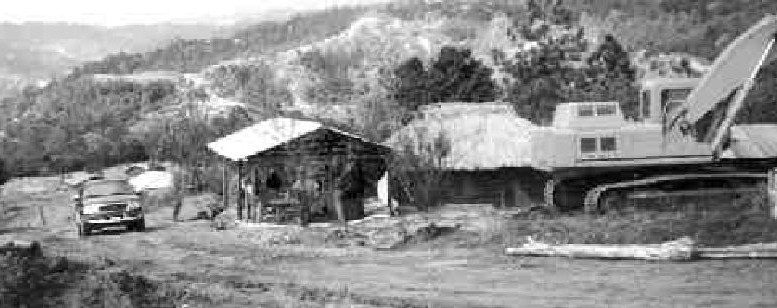Vancouver — With the US$121-million takeover of
In mid-June, Francisco shareholders voted 95% in favour of the merger, which calls for each share in the Randy Riefel-led company to be converted into 1.5 shares of Glamis and 1 share of a new exploration company called Chesapeake Gold.
“We are extremely pleased with the overwhelming support shown by Francisco’s shareholders in approving the merger,” says Glamis President Kevin McArthur, “and look forward to implementing our aggressive development schedule for El Sauzal, as well as an accelerated exploration program at Marlin.”
The next stage in combining the companies is a hearing before the Supreme Court of British Columbia regarding the arrangement and its fairness to shareholders. One holder of escrowed shares, the release of which has been denied by the province’s Securities Commission, has stated opposition to the arrangement.
Since announcing the merger in March, the two companies have worked together to table a bankable feasibility study of El Sauzal, which is situated in Chihuahua state. Completed by AMEC E&C Services at a cost of $1.5 million, the study calls for an open-pit/milling operation capable of producing 173,000 oz. gold annually at a total cash cost of US$114 per oz. during an 11-year mine life. Initial capital costs are slated at US$101 million and the internal rate of return comes in at 20%, using a US$300-per-oz. gold price. The stripping ratio comes in at a respectable 1.3-to-1, and the gold recovery rate is expected to hit 95%.
El Sauzal is a high-sulphidation, epithermal gold deposit with a proven and probable oxide reserve of 2 million oz. in 18.5 million tonnes grading 3.37 grams gold. Some 7 million tonnes grading 3.72 grams gold lie in the proven category.
Baseline studies and permitting are under way. Infrastructure and design work have also been launched, and should be finished later this year.
“We chose Glamis to develop El Sauzal because of its strong mine development team, production track record in Central America, and solid financial position,” says Francisco Gold President, Randy Riefel. “I am confident of Glamis’s ability to develop these high-quality assets in a timely manner.”
Meanwhile, in western Guatemala, Francisco’s Marlin property has also been put on the fast track. So far, 72 holes have been sunk, 63 of which targeted the Main zone. Based on drill results from a 500-metre portion of the zone, Glamis pegs the measured resource at 4.2 million tonnes grading 1.94 grams gold. The indicated and inferred resources come in at 8.6 million tonnes averaging 1.46 grams gold and 14.1 million tonnes grading 1.09 grams gold, respectively.
The Main zone consists of a gently west-plunging, near-surface system of mineralization associated with multiple south-dipping thrust faults and a sub-vertical feeder fault partially bounding it to the south. Last fall, an induced-polarization (IP) and resistivity geophysical survey was completed over a 1,100-by-1,000-metre grid centred on the Main zone. The results defined a broad east-northeast-striking resistivity anomaly, open at both ends. There is a direct correlation between the high resistivity and the high-grade portion of the Main zone.
The Marlin property lies 250 km northwest of Guatemala City in the Department of Huehuetenango and within the municipality of San Miguel. The property is accessible by a series of dirt roads, originating off the Pan American Highway, near the town of Huehuetenango, 30 km east of Marlin.
Glamis has tabled a US$3-million drilling budget for the project. The first stage of the program calls for 5,000 metres of core and reverse-circulation drilling aimed at testing the Main zone at depth, as well as the Los Cochis, Cancil, Ajel and La Cienega areas. Another 12,000 metres will then be drilled to define the limits of the mineralization, followed by 15,000 metres of reserve definition drilling.
“The addition of El Sauzal and Marlin to Glamis’s project pipeline provides a platform for growth second to none in our industry,” adds McArthur. “We are confident Glamis is on track to reaching its near-term goal of 500,000 oz. of annual gold production, while maintaining cash costs below US$150 per oz.”
In 2002, Glamis expects to produce 255,000 oz, gold at a total cash cost of US$172 per oz.


Be the first to comment on "El Sauzal proves bankable"